Nature often surprises us with creatures that seem too whimsical to be real. Among these remarkable animals is the Bearded Barbet, a bird so vibrantly colored and uniquely shaped that it appears to have hopped straight out of an animator’s sketchbook. With its rainbow plumage, distinctive “beard,” and comical appearance, this feathered wonder has captivated birdwatchers and casual observers alike. The Bearded Barbet represents one of nature’s most charming examples of evolutionary design meeting what humans perceive as artistic expression, creating a living character that challenges our understanding of where natural beauty ends and cartoon-like fantasy begins.
The Cartoon-Like Wonder: Introducing the Bearded Barbet
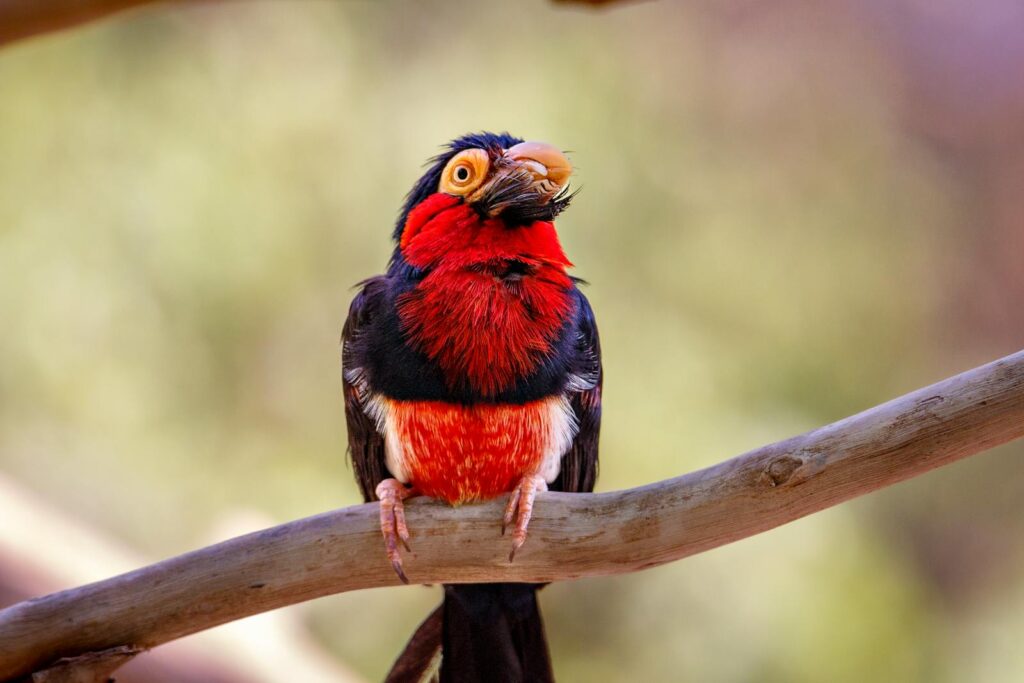
The Bearded Barbet (Lybius dubius) is a member of the African barbet family that seems almost too fantastical to exist in nature. With its stocky body, oversized head, and brilliant combination of red, yellow, and black feathers, this bird immediately evokes comparisons to animated characters. The barbet’s most distinctive feature is its robust, slightly hooked bill surrounded by specialized bristles that form what appears to be a “beard,” giving the bird its common name and enhancing its cartoon-like quality. Found across a band of West African countries including Ghana, Nigeria, and Senegal, these remarkable birds occupy a unique position as one of ornithology’s most visually striking species. Their appearance is so unusual that first-time observers often do a double-take, wondering if they’ve actually spotted a real bird or an escaped children’s toy.
Evolutionary Marvel: The Science Behind the Barbet’s Appearance
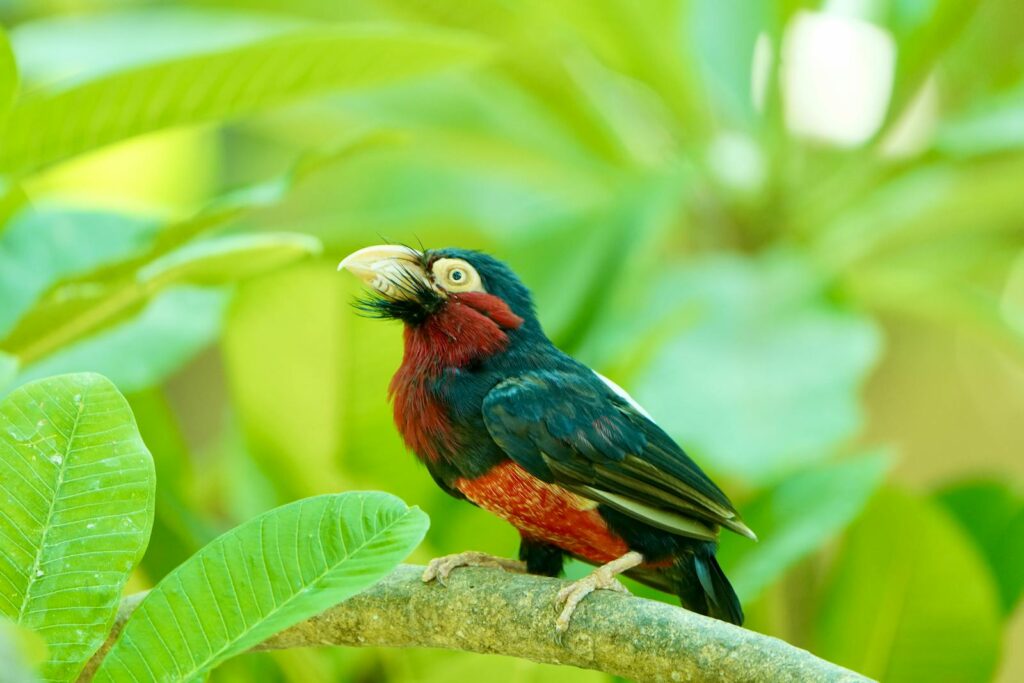
The Bearded Barbet’s cartoon-like appearance is not a coincidence but rather the result of millions of years of evolutionary adaptation. The bird’s large, powerful bill has evolved to help it feed on fruits, insects, and occasionally small vertebrates, functioning as an efficient tool for foraging in its woodland habitat. The bristles around the bill serve a practical purpose by protecting the bird’s face and eyes from fruit juices, insect defenses, and debris when foraging or excavating nest cavities. Scientists believe the barbet’s bright coloration plays several important roles, including species recognition, territory defense, and possibly as indicators of health during mate selection. What appears whimsical to human observers actually represents sophisticated adaptations that have helped this species thrive in its ecological niche for countless generations.
A Rainbow of Feathers: The Barbet’s Striking Coloration
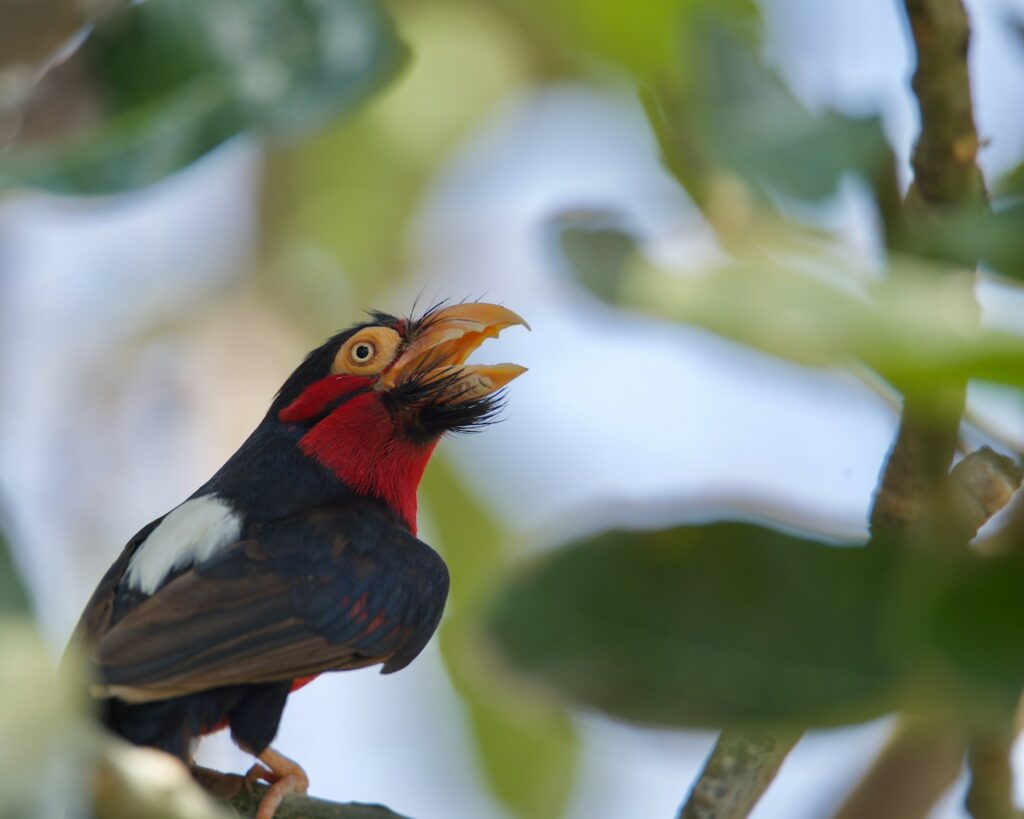
The Bearded Barbet’s plumage could be described as nature’s equivalent of a skilled artist’s palette. Its head features a brilliant scarlet crown and face, contrasting dramatically with a distinctive black “bib” and beard-like bristles. The bird’s back and wings showcase a glossy black coloration, while its underparts flash with vibrant yellow, creating a tricolor effect that stands out vividly against green foliage. This color combination isn’t random – evolutionary biologists suggest these high-contrast patterns may help barbets recognize members of their own species in dense forest canopies. The intensity of these colors remains consistent throughout the year, unlike some birds that only display breeding plumage seasonally, making the Bearded Barbet a perpetual standout in its environment. Interestingly, both males and females share this spectacular coloration, with little to no sexual dimorphism in appearance.
The Characteristic “Beard”: More Than Just Appearance
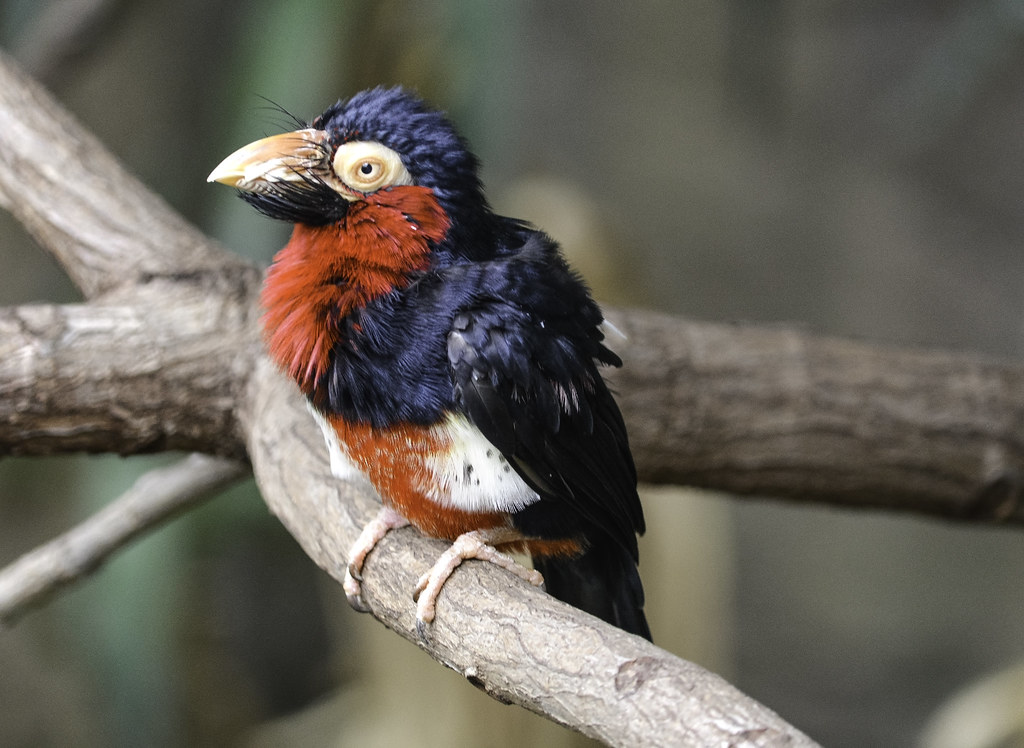
The Bearded Barbet’s most distinguishing feature – its “beard” – is not actually made of feathers but consists of specialized bristles around the base of its bill. These modified feathers serve multiple practical functions beyond giving the bird its cartoon-like charm. The bristles help protect the barbet’s eyes and face when it’s excavating nest cavities in trees or foraging for insects in bark crevices. They also function as sensitive tactile organs, similar to a cat’s whiskers, helping the bird navigate tight spaces and detect prey. When the barbet feeds on juicy fruits, these bristles prevent sticky residues from matting the facial feathers, maintaining the bird’s hygiene and the functionality of its regular plumage. Evolutionary ornithologists point to these bristles as an excellent example of how features that seem purely decorative often serve critical survival functions.
Habitat and Distribution: Where to Find These Living Cartoons
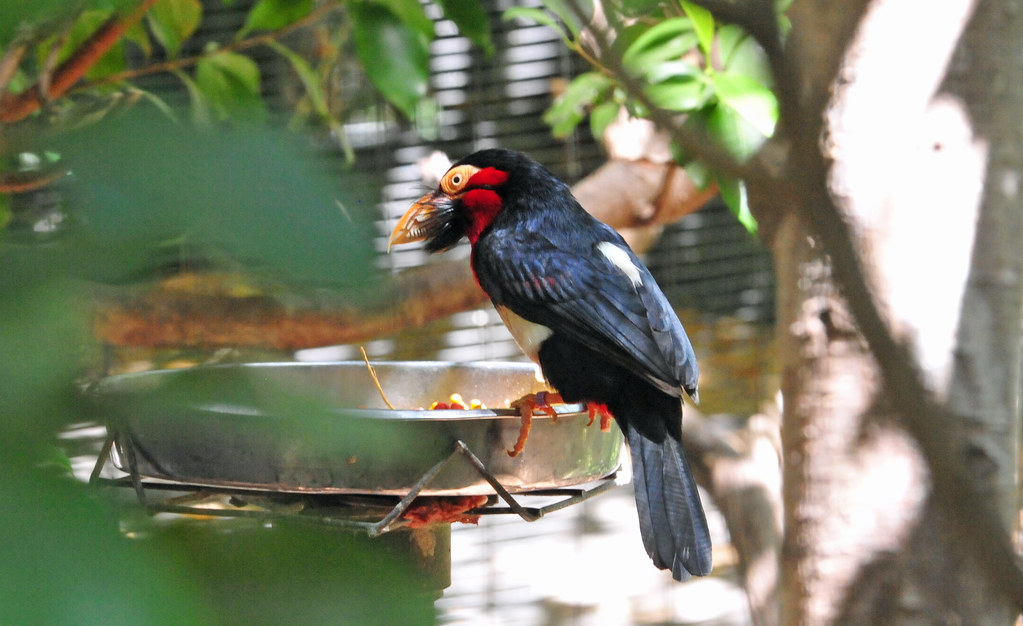
The Bearded Barbet inhabits a specific band of sub-Saharan Africa, primarily across the West African countries of Senegal, Gambia, Guinea, Sierra Leone, Liberia, Ivory Coast, Ghana, Togo, Benin, Nigeria, and parts of Cameroon. These birds prefer woodland savannas, forest edges, and partially wooded grasslands, particularly favoring areas with scattered fig trees and other fruit-bearing vegetation. Unlike some specialized bird species, Bearded Barbets have shown remarkable adaptability to human-modified landscapes, frequently appearing in agricultural areas, parks, and gardens where sufficient trees remain for feeding and nesting. This adaptability has helped maintain relatively stable populations despite increasing habitat fragmentation in parts of their range. Birdwatchers seeking these living cartoons often have success around fruiting trees, especially in the early morning when the barbets are most actively feeding.
Social Structures: The Barbet’s Community Life
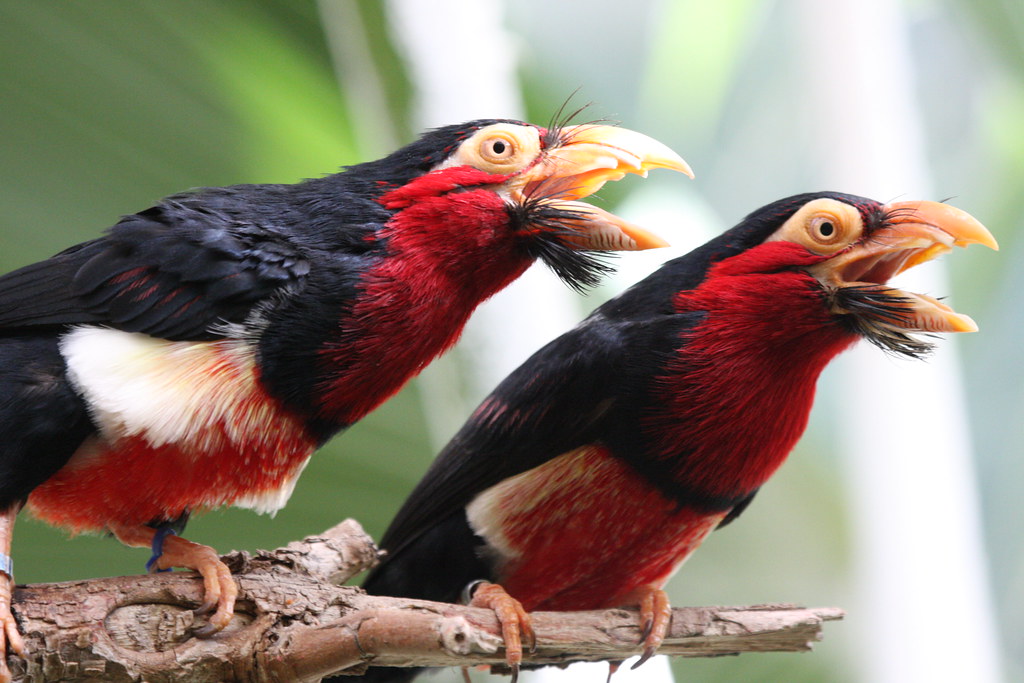
Bearded Barbets exhibit fascinating social behaviors that enhance their cartoon-like persona, often appearing in small family groups of 3-5 individuals moving through their territory together. These birds form strong pair bonds that frequently last for multiple breeding seasons, with partners engaging in mutual preening behaviors that strengthen their relationship. One of the most charming aspects of barbet social life is their habit of huddling together on branches, side by side, creating what bird enthusiasts affectionately call a “barbet train” – a scene straight out of an animated film. Communication within these groups involves a repertoire of calls ranging from melodious whistles to more mechanical-sounding “poop-poop-poop” vocalizations that help maintain group cohesion. Their territories are vigorously defended against other barbet groups, with dramatic displays of bill-clapping and plumage-fluffing serving as warnings to potential intruders.
Nesting Habits: Carving Homes in Trees
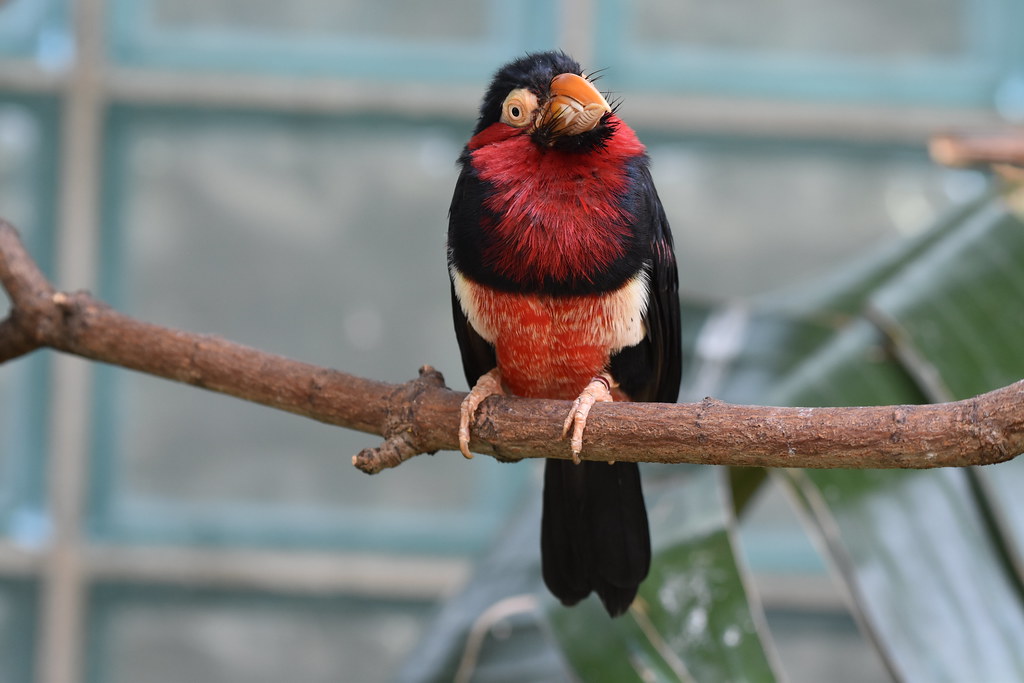
The Bearded Barbet’s nesting behavior adds another dimension to its fascinating lifestyle, as these birds are primary cavity nesters, meaning they excavate their own nest holes rather than using existing cavities. Using their powerful bills, a mated pair works together to chisel out a chamber in a dead tree or soft wood, creating a perfectly rounded entrance hole that leads to a nesting chamber lined with wood chips. This excavation process can take anywhere from one to three weeks, with both partners taking turns drilling into the wood and removing debris. Once completed, the female typically lays 2-4 glossy white eggs that both parents incubate for approximately 13-15 days. After hatching, the naked and helpless chicks develop quickly on a diet of regurgitated fruits and insects provided by both parents, fledging after about 24-28 days but remaining with their parents for several additional weeks.
Dietary Preferences: What Keeps These Cartoon Birds Thriving

The Bearded Barbet’s diet reflects its adaptability, consisting primarily of various fruits that provide essential nutrients and hydration. Figs hold a special place in their dietary preferences, with barbets often being among the first birds to discover newly ripening fig trees. This fruit-heavy diet is supplemented with protein-rich insects, particularly during breeding season when growing chicks require additional nutrition for development. Observant birdwatchers may spot barbets skillfully hawking flying insects from a perch or meticulously gleaning caterpillars and beetles from foliage. The birds occasionally consume small vertebrates like lizards or tree frogs when opportunity presents, demonstrating surprising versatility for what might initially appear to be specialized frugivores. Their feeding technique adds to their cartoon-like quality – barbets often hang in acrobatic positions to reach fruits, sometimes appearing to perform comical gymnastics as they maneuver to secure their meals.
Vocalizations: The Soundtrack to Their Cartoon Appearance
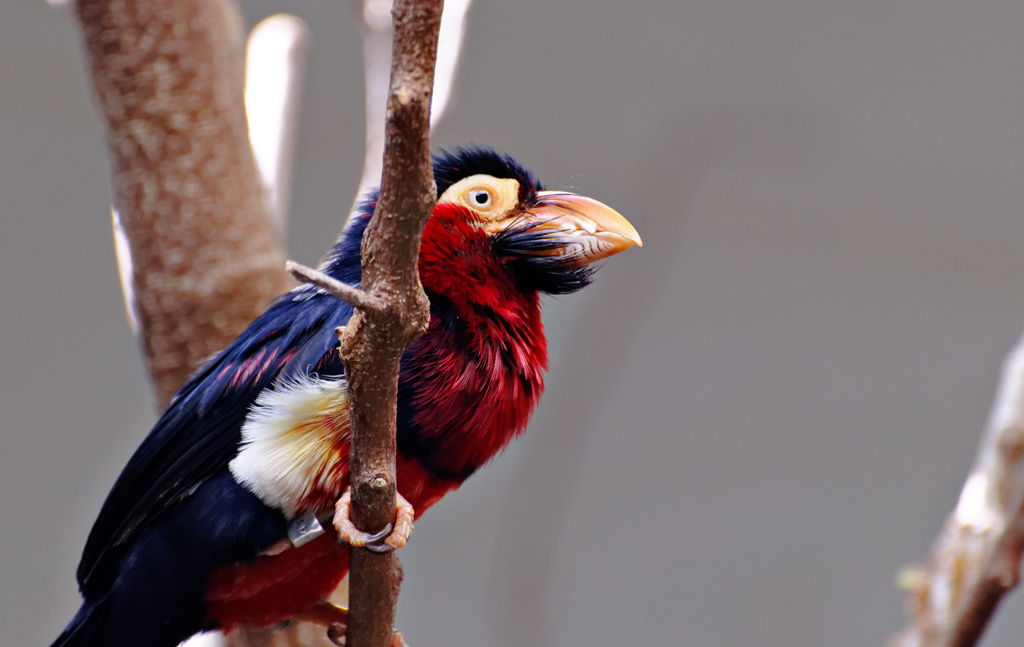
The Bearded Barbet’s vocalizations perfectly complement its animated appearance, featuring a repertoire of sounds that seem almost deliberately designed for a cartoon character. Their most common call is a distinctive series of “poop-poop-poop” notes delivered at a consistent rhythm, sometimes continuing for several minutes without interruption. During territorial disputes, these calls accelerate and increase in volume, creating an almost comical sound that belies the seriousness of the confrontation. Mated pairs often engage in coordinated duets, with partners alternating calls in perfect synchronization, creating complex melodies that strengthen their bond and announce their territory to neighbors. Interestingly, barbet vocalizations carry well through forest environments due to their low frequency, allowing these birds to communicate effectively even in dense vegetation where visual signals might be obscured.
Conservation Status: Protecting Nature’s Cartoon Creation
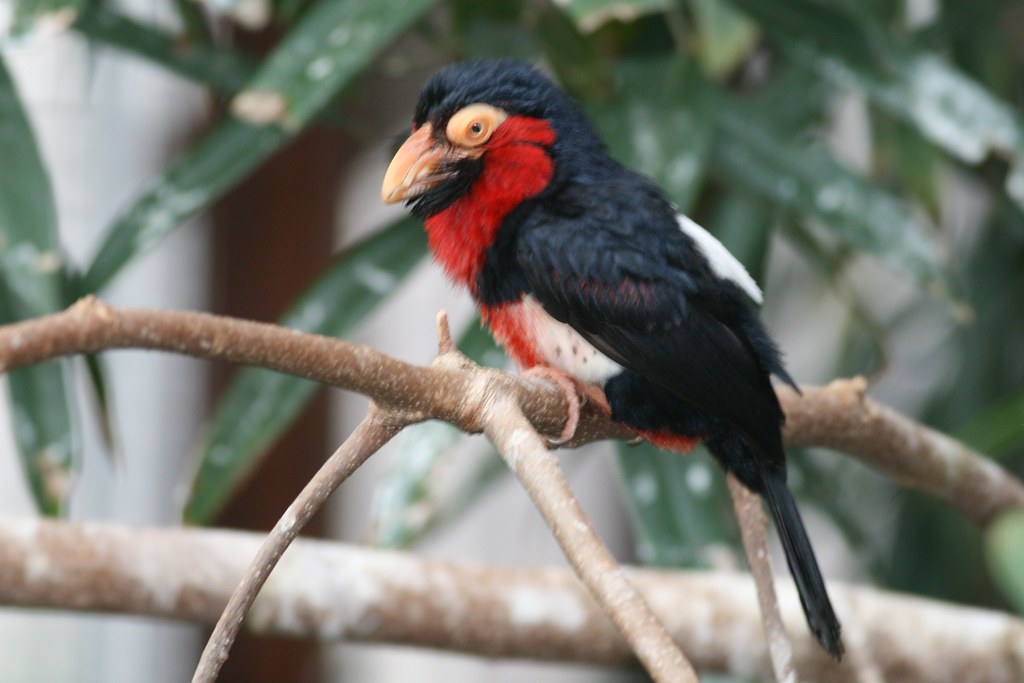
Despite their eye-catching appearance, Bearded Barbets currently maintain a conservation status of “Least Concern” according to the International Union for Conservation of Nature (IUCN). This relatively secure position stems from the species’ wide distribution across West Africa and its demonstrated adaptability to moderately altered habitats. However, conservation biologists caution against complacency, as the barbet faces increasing challenges from accelerating deforestation, agricultural expansion, and urban development across its range. The birds’ dependence on mature trees for both feeding and nesting makes them vulnerable to large-scale habitat conversion projects. Climate change represents another potential threat, as shifting rainfall patterns could affect fruit availability and potentially disrupt breeding cycles. Conservation efforts focusing on sustainable forest management and the preservation of woodland corridors have proven beneficial for maintaining healthy barbet populations while balancing human development needs.
Cultural Significance: The Barbet in Local Traditions
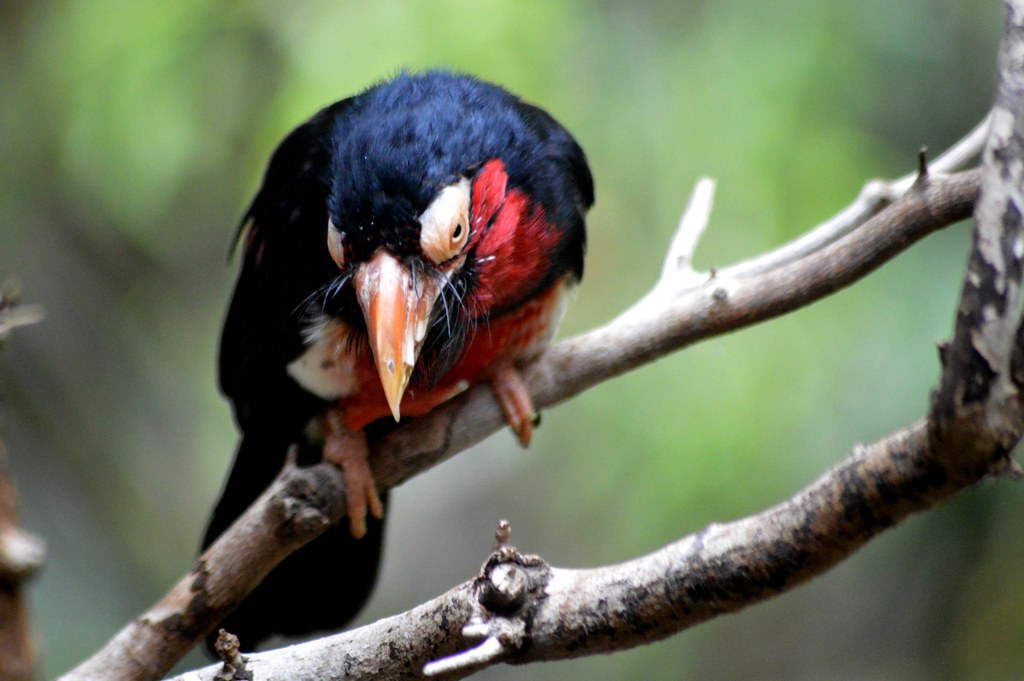
The Bearded Barbet’s striking appearance has earned it special recognition in the cultures and folklore of several West African societies. In some communities across its range, the bird features in traditional stories as a symbol of joy and abundance due to its colorful plumage and association with fruiting trees. Certain ethnic groups consider spotting a Bearded Barbet to be a positive omen, particularly when encountered at the beginning of a journey or before important community events. The bird’s distinctive call has been incorporated into traditional music, with some percussion rhythms designed to mimic the barbet’s steady “poop-poop-poop” vocalization. Contemporary West African artists increasingly feature the Bearded Barbet in visual arts, recognizing its unique aesthetic appeal as both a celebration of local biodiversity and a distinctive regional emblem that resonates with international audiences drawn to its cartoon-like charm.
Photographing the Living Cartoon: Challenges and Rewards
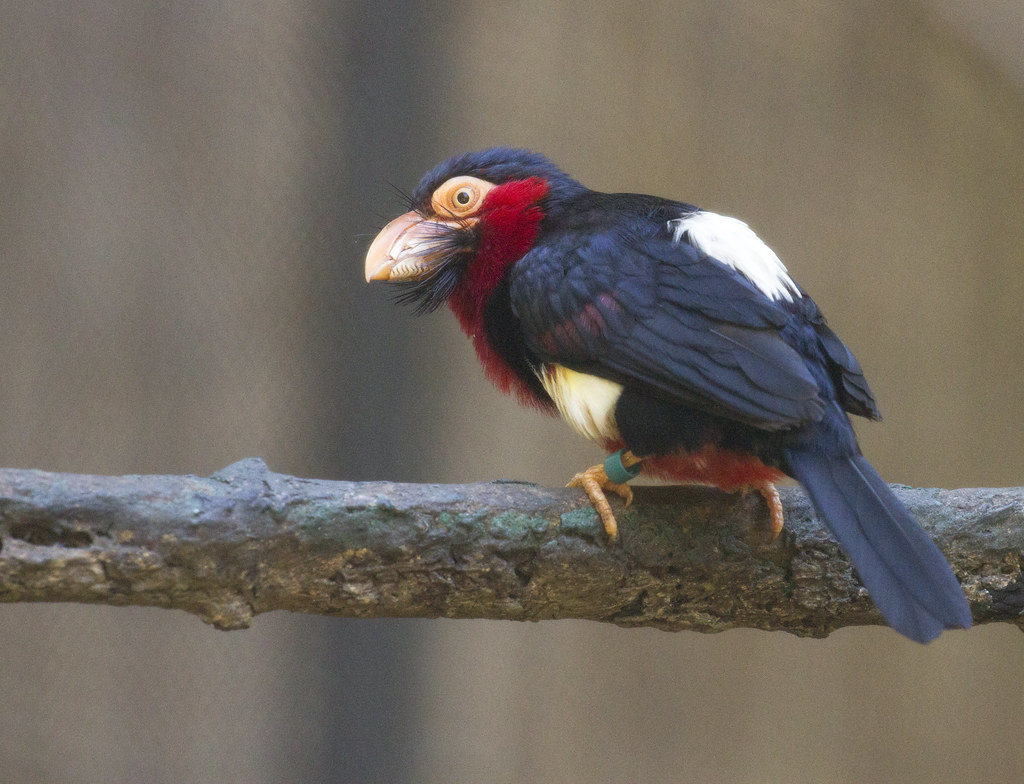
Wildlife photographers seeking to capture the Bearded Barbet face unique challenges and extraordinary rewards. The bird’s habit of foraging in mid-to-upper canopy levels often places it in dappled light conditions, creating tricky exposure situations that can either wash out or undersaturate its brilliant colors. Patient photographers typically achieve their best results during early morning or late afternoon when barbets are most active and the light quality enhances rather than diminishes their vibrant plumage. The birds’ relatively trusting nature around humans, especially in areas where they’ve grown accustomed to people, sometimes allows for remarkably close approaches and intimate portraits that showcase their cartoon-like features. Successful barbet photography often involves staking out fruiting trees, particularly figs, where the birds predictably feed for extended periods, providing multiple opportunities for that perfect shot. The photographic results often elicit disbelief from viewers unfamiliar with the species, who frequently assume the images must be digitally enhanced rather than accurate representations of this extraordinary bird.
Similar Species: The Barbet’s Cartoon Cousins
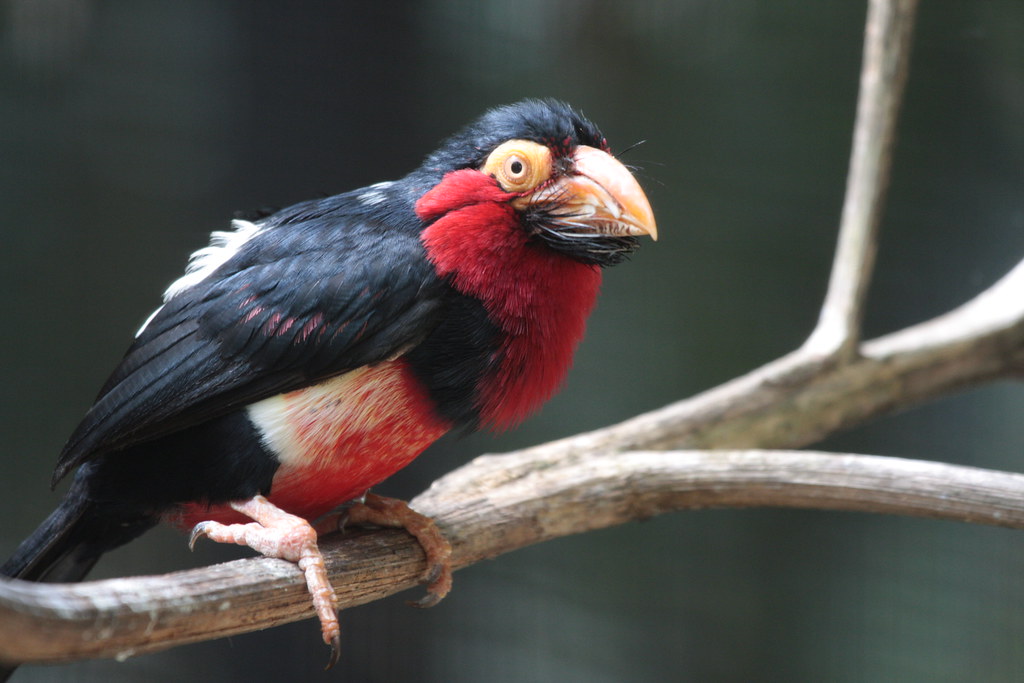
The Bearded Barbet belongs to a fascinating family of birds with several members sharing similarly whimsical appearances. The Double-toothed Barbet (Lybius bidentatus), with its red, black, and white pattern, resembles a different but equally cartoonish character from the same animator’s imagination. The Black-spotted Barbet (Capito niger) sports a striking yellow and black pattern reminiscent of certain animated bees or wasps from children’s programming. The Coppersmith Barbet of Asia (Psilopogon haemacephalus), while not closely related, convergently evolved a similar body shape and animated appearance with its green body and crimson-splashed head. These various barbet species demonstrate how evolutionary processes operating independently across different geographic regions can produce birds that share the same cartoon-like aesthetic that so captivates human observers. Ornithologists studying barbet evolution suggest that these similarities represent successful adaptations to similar ecological niches across different continents, resulting in comparable physical characteristics despite distant genetic relationships.
Conclusion
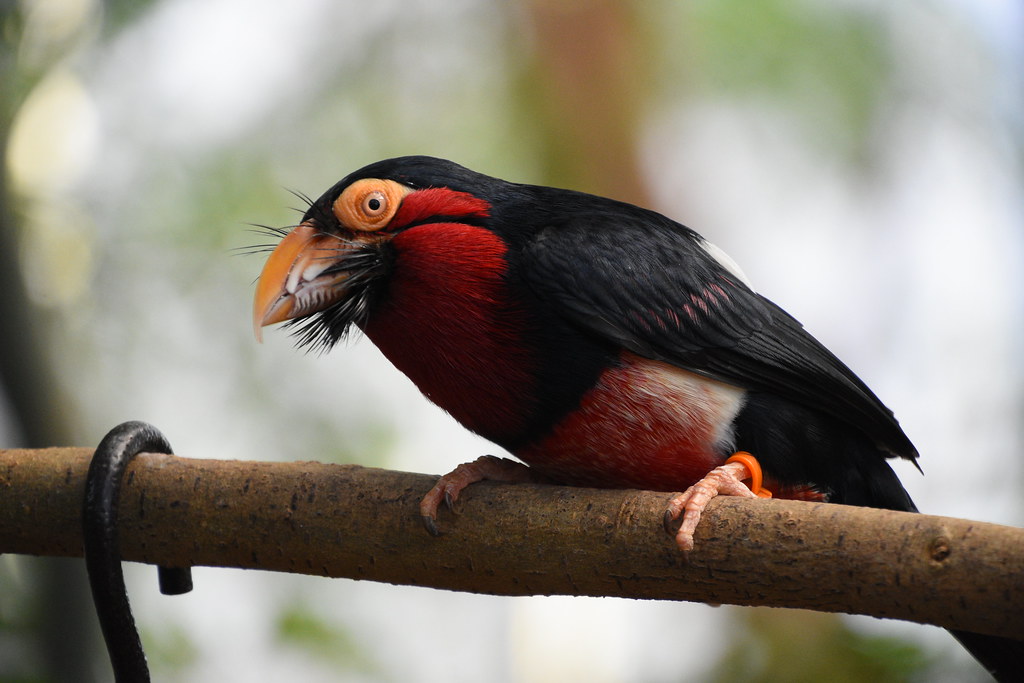
The Bearded Barbet stands as one of nature’s most charming contradictions—a completely natural creation that seems deliberately designed to delight human sensibilities. Its cartoon-like appearance reminds us that the line between natural evolution and what we perceive as artistic design is often blurrier than we might think. As these vibrant birds continue to brighten the forests and woodlands of West Africa, they serve as living ambassadors of biodiversity’s creative potential. In a world where the gap between natural and artificial experiences continues to widen, the Bearded Barbet offers a joyful reminder that sometimes, reality can be even more fantastic than fiction. These remarkable birds deserve both our appreciation for their aesthetic charm and our commitment to preserving the environments that allow such extraordinary creatures to thrive.
